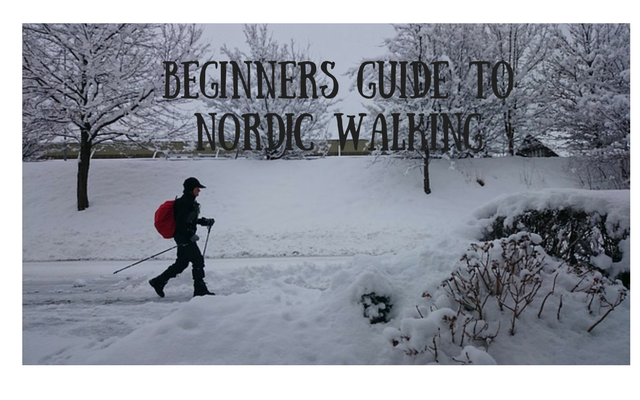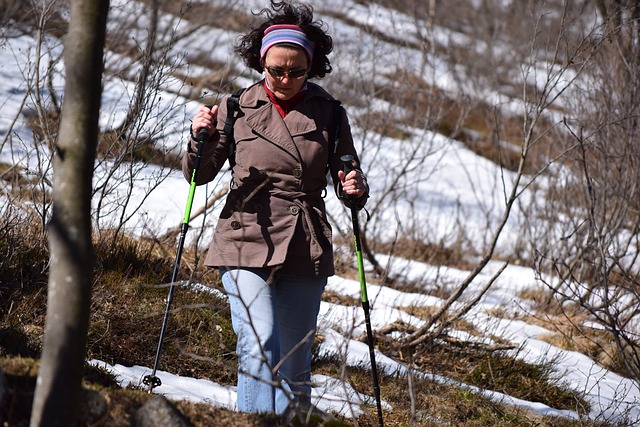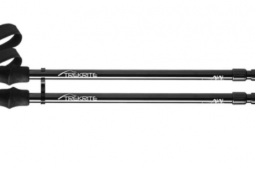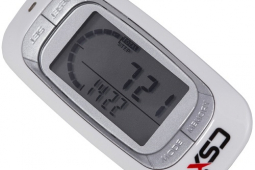Beginners Guide to Nordic Walking

Walking with Poles for a Full-Body Workout
You might have seen them in your local park. Those people walking around holding pairs of ski-poles are not crazy. In fact, they are taking part in a growth exercise – Nordic Walking. A key benefit is that you get an all-body workout, which you can tailor to your own fitness level and age.
This page gives you an introduction to Nordic Walking. Here you will find out about why this works, the equipment (including different endings for the poles), and the best way to get started. The name? This came from the fact that skiers in Scandinavian countries used Nordic walking during the summer. It helped to keep them fit for the next ski-season.
The Basics: Why Nordic Walking Beats Regular Walking
Walking, especially at a brisk pace, is useful for cardio health. This uses your legs and core, though other muscle groups are not used much. Nordic walking brings in a lot more muscles, albeit gently. By using poles, you are using your arms, shoulders, chest and the motion involves muscles in your core and back too.
You get to control the intensity, depending on how vigorously you plant the poles on the ground.
Nordic walking is ideal for older people, and for those starting on the road to fitness. It allows for an all-over workout without being high-intensity. For many of us, lifting in a gym or doing an aerobics class would be difficult. Walking with poles fills that gap. Once you are used to the actions, it will provide benefits without feeling like too much effort at all.

Let’s Talk Nordic Walking Poles
There are two types of poles, and several types of attachment for the end of them.
The basic distinction is between a fixed pole and a telescopic one. Fixed poles come via the history of this activity as something to keep Skiers in shape. These poles are very much like ski-poles. The problem with these is that people are different heights. This makes it difficult to get the ideal length ‘off the shelf’. You might be able to do this with some trial and error – though with so many options for telescopic poles, this is unnecessary.
Poles which expand have an additional advantage. They are much easier to store away and carry in the car on your way to a walk. Look for poles with hoops for your hands at the top, and ideally with a choice of tips and a carry-bag. As ever, I recommend a quality product, going too low-end could see you ending up with a knock-off that will not stand the test of time.
These poles from TrailBuddy are the best-sellers in the quality category at amazon.co.uk (lots of positive feedback, and lovely cork handles – check them out!)
Nordic Walking Pole Tips
Originally, Nordic Walkers would have used actual ski-poles, with the circle and spike endings. These might not work walking down the street (and might cause confusion in the park!). Instead, I recommend poles with the following switchable tips.
For pavements and dry footpaths, get a rubber foot. While there are different designs, these have the same effect – giving you some grip. I have seen rubber balls covered in nodules and things that look like jagged door stops!
For grass (and especially in wet conditions), go for a spiked tip instead. This will give you that all important grip – as well as helping to ‘plant’ your pole.
Mechanics of Nordic Walking: How to Get Started
When you first take your poles for a stroll, you don’t need to go the whole-hog. The most basic way of using your poles is simply to drag them behind you, with your arms relaxed. That extra weight will help exercise your upper body.
Next, start swinging your arms, bringing the poles forward with this motion – though not yet planting them or putting any weight directly on the pole. Once you have got used to this motion, then you can start to plant the poles each stride. Gently does it, and level with your body is fine while you get going.
Before long you’ll be swinging your arms, firmly planting your poles in front of you, and giving yourself that low intensity all-body workout.

Where to Nordic Walk?
Of course, we’d all love access to rolling hills and beautifully maintained hiking trails (maybe with views of glaciers like the original Nordic Walkers!). The real beauty of Nordic Walking is that you can do it almost everywhere.
Start with your neighbourhood. A quick walk around the block with your poles will pay dividends if it becomes a part of your regular routine. The local park or river adds even more possibilities. I recommend finding friends or local group. Study after study shows that maintaining any fitness activity largely depends on the social elements.
Finally, you can take your Nordic Walking poles on holiday. A brisk walk down the beach can do a lot to alleviate the effects of all that food and drink!
These TravelBuddy adjustable poles are the best-selling quality (adjustable) walking poles at amazon.co.uk – check out the positive comments from previous buyers… and enjoy the benefits of Nordic Walking.
Ps: A good motivational tip is to measure your progress / improvements. A low-price way to achieve this is with a simple Pedometer. This will track steps, distance and calories burned. By tracking each walk, you’ll see your progress towards a fitter, healthier lifestyle. Check out my list of the Best Walking Pedometers for more on those.
More Popular Guides:
- Body Fat Percentage, BMI and Burning Fat
- World Cup Fitness Guide
- Kids Room Flooring
- Intro to Circuit Training
- Taking Workout Rest Days



